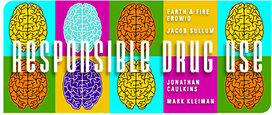I fully agree with Sullum that saying modern humans must relate to psychoactives responsibly is not the same as denying an individual’s right to choose temperance. However, the Erowids’ full statement was
Modern humans must learn how to relate to psychoactives responsibly, treating them with respect and awareness, working to minimize harms and maximize benefits, and integrating use into a healthy, enjoyable, and productive life.
I explicitly wrote that “most of that assertion is innocuous,” but singled out the part about the necessity of integrating use into life as not respecting someone’s right to choose not to use a drug.
The rest of Jacob’s essay goes on to articulate clearly where he and I do disagree. We both agree that people are not morally obligated to follow a sufficiently unjust law, but disagree about whether prohibiting recreational use of certain psychoactive drugs is sufficiently unjust in
this sense. I believe a citizen’s general obligation to obey democratically enacted laws holds in all but extreme cases; examples of exceptions might include overtly racist laws such as the former apartheid laws in South Africa. A law can be misguided or ineffective or paternalistic without being unjust in the sense of nullifying one’s duty to obey that law.
As a final clarification, I’m not sure, as Sullum suggests, that I “clearly [believe] it’s appropriate to forcibly protect people from risks they voluntarily assume.” I approach such issues on a case-by-case basis, with a strong prior bias against government intrusion. However, if my side loses in the political process, and a restrictive law is passed, I think it is my responsibility to accept the disappointment gracefully and comply with the law (again, assuming the law is constitutional, is not akin to South Africa’s old apartheid laws, etc.).

